Explore and Learn About the Gallery
This Gallery is situated within the old Telegraph & Post Office building from which J McDouall Stuart sent his message in Dec 1862, to inform the SA authorities that he had successfully crossed Australia.
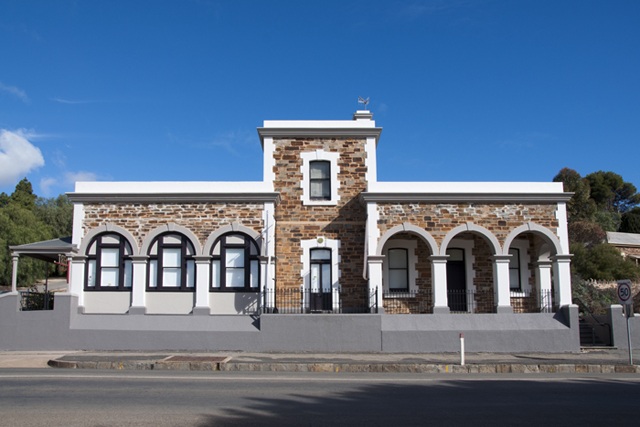
Bellow you will find some information about this glorious gallery space we have here in Burra.
- Postcards South Australia; Burra Art Gallery Article
- A Look at the Gallery Show Spaces
- The Early Days of the Burra Regional Art Gallery
- Show Your Work or Volunteer at the Burra Regional Art Gallery
Postcards South Australia; Burra Art Gallery Article
In 2011 Postcards South Australia created a wonderful article about the Burra Regional Art Gallery. You can find the original article here: Postcards Burra Art Gallery article. NOTE: You will not get their full interface by following that link due to their peculiar website structure; if you want to browse other articles click on the link at the start of this paragraph.
A Look at the Gallery Show Spaces
Bellow are an assortment of photo’s of the various gallery spaces. It’s a beautiful building with excellent show spaces for displaying work from the small and intimate to the huge and confronting with everything in-between.

Main Room – Commonalities + 2015
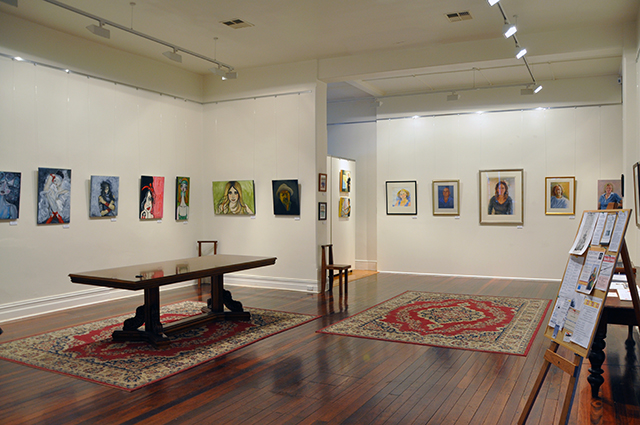
Portrait Competition 2011
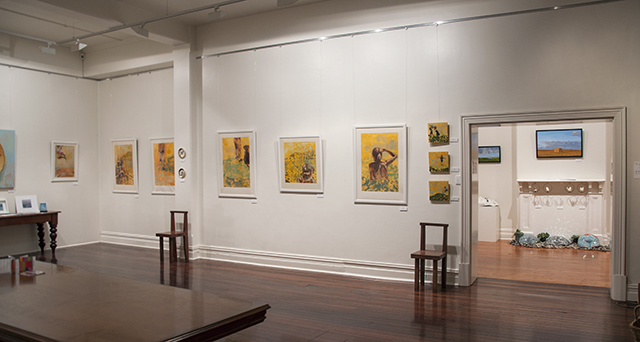
Main Room – SALA 2014

Annex

Annex
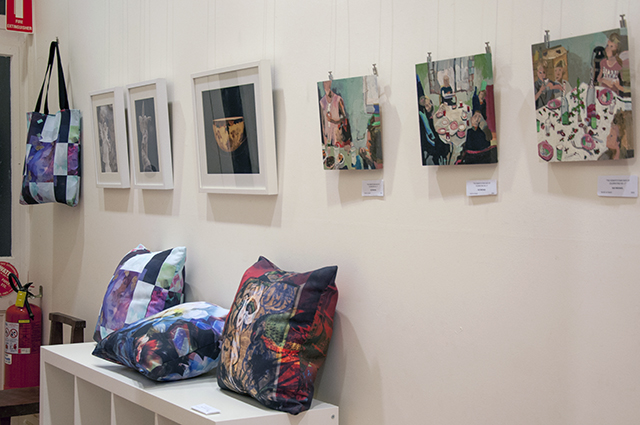
Corridor

Bence Room – Margie Hooper – Transformations

Bence Room – Northern Landscapes 2012
The Early Days of the Burra Regional Art Gallery
In the early 1990s interest in the fine arts was such that the time seemed to be right for an Art Gallery to be established in Burra for the people of Burra and of the surrounding region.
Several artists local to Burra and the nearby region had shown, by their skill and by the number and variety of their paintings and other works of art that were exhibited and sold, that not only was the Burra region rich in artistic talent but also the wider community was ready to appreciate and support what an Art Gallery in Burra could offer. Such artists included the iconic water-colour painter Leonard Bence, the nationally-recognized portrait painter Robert Hannaford, the popular landscape artist Allyson Parsons and the busy local artist and local artists’ representative Glenys Christopher.
Penhaligon’s Country House in Chapel Street, Burra (which was being operated as a bed and breakfast establishment) was the meeting place, in 1994 , for a group of residents, “weekenders”, pastoralists, small business operators, bed and breakfast providers, town planning consultants and community-minded people from the Burra township and the surrounding region. They sat in front of a warm and welcoming log fire. They enjoyed the hospitality provided by Susan Roche, the then proprietor of Penhaligon’s. They discussed a proposal that an Art Gallery be established. Each of those people was, in his or her own way, a visionary. They were to become the inaugural Board to establish and then manage the proposed Art Gallery.
The District Council of Burra Burra, under the chairmanship of Cr.Graham Kellock, was interested in the proposal to establish an Art Gallery and provided a heritage building and other facilities for the purpose. The historic building, which had been home for the Old Post and Telegraph Office, with its connections with the famous and successful expedition of exploration led by John McDouall Stuart crossing the continent from south to north and return in 1861-1862, proved to be an ideal site.
In October 1994 the interested personnel, who had been meeting at Penhaligon’s, formed themselves into what became the McDouall Stuart Board of the Burra Art Gallery Inc. The inaugural members were Judge Andrew Wilson, as Chairman, Mrs. Jan Davis, Mrs. Jojo Gebhardt, Mr.Vincent Burke, Mr. Tony Barker, Mr. Andrew Gebhardt and the dynamic Mrs. Susan Roche. They were later joined by Cr. Jim Quinn as the Council’s representative on the Board.
One of the Board’s first tasks was to ensure that an application was made to the Arts Grants Committee of the South Australian Country Arts Trust for a grant to renovate and refurbish the Old Post and Telegraph Building. A grant of $36,490.00 was received. A later and second application for a government grant ($45,423.68) was also successful.
The Gallery, whose name was to become the Burra Regional Art Gallery, was officially opened on Saturday, 5 October 1996 by the Chairman of the South Australian Jubilee 150 Board , Mr. Kym Bonython AC, DFC, AFC, KSJ. The Opening Exhibition stimulated great interest. It was entitled : “FAMILY COLLECTIONS AND CONNECTIONS – selected works from the private collections of the Wilson and Bonython families”. The curator was Heather Parker.
In the years that followed the Official Opening, the Gallery operated with the significant assistance of the District Clerk and other members of the staff of the District Council. Such assistance continued to be provided after the Regional Council of Goyder came into existence. The success of the Gallery owes much to the dedication and hard work of those who served on committees such as the Restoration Committee, the Finance Committee, the Local Artists Committee, the Publicity Committee and the Friends of the Gallery. The renovated building soon had all the facilities and amenities of a modern Regional Art Gallery, and it enjoyed an A Class Rating.
Local exhibitions, exhibitions from elsewhere in South Australia, exhibitions from interstate, and the so-called “touring” exhibitions were mounted, and have continued to be mounted ever since. The talent of a wide variety of artists has been put on display. The work of painters, sculptors, quilters, print-makers and many other artists has been exhibited and, on occasions, sold for the mutual benefit of the artist and the Gallery.
To enhance the standing of the Gallery, the Board was pleased to accept from the Council, for permanent display, the Collection of four restored paintings by S.T. Gill. This Collection, as well as the paintings hung from time to time in the Leonard Bence Room, continues to generate interest among visitors to the Gallery.

ST Gill Room
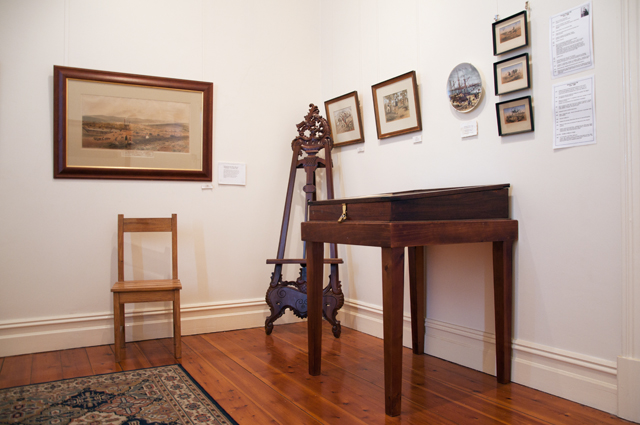
ST Gill Room
The extent to which the inaugural Board members may be seen as visionaries may be measured by assessing the extent to which the inaugural Board and its successors have “lived up to the vision” and achieved progress. It was minuted on 9 October 1994 that:
“the Board must aim to provide both a centre of excellence in Art, being widely recognised, yet being one that is also open to local talent and that rests on the input and co-operation of the local community”;
“to ensure that the Board maintains high quality and the integrity to achieve respect and recognition in the wider Arts world, it is essential that the Board undertake the effective and continuous management of the Gallery, with undivided responsibility for decision-making in respect of artistic matters, personnel and management of the building”;
“the Board must accordingly work with the Council in a co-operative manner on a firm and independent basis, with its own constitution and funding, while relying on the practical support of the Council.”
The Board fulfilled its role in the early days. It has not been suggested that the Board’s successors did other than fulfill their role during the past 14 years.
Compiled by Andrew Wilson , the inaugural
Chairman of the McDouall Stuart Board 1994-1997
Show Your Work or Volunteer at the Burra Regional Art Gallery
Are you an artist and wish to show your work here? Please contact the exhibitions co-ordinator. Or would you like to contribute to the operation of the Art Gallery as a volunteer? We have need for people ready and willing with a variety of skill levels and experience. Visit our Contacts Page to find the relevant contact details. Additionally it would be advisable to visit our Information Page for some useful information and resources about how to go about doing this.
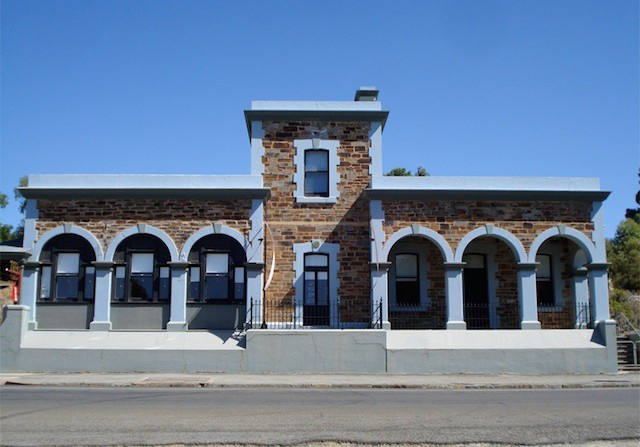
S.T. Gill (1818 – 1880)
His Life and Times
Samuel Thomas Gill, the son of Rev. Samuel Gill, a Baptist minister and his first wife Winifred Oke, was born in Periton near Minehead, Somerset, England on 21st May 1818. He was educated at a school in Plymouth, Devon, run by his parents, and later at Dr. Seabrook’s Academy. He learnt the rudiments of drawing from his father who was an amateur artist. He was first employed in London as a draughtsman and watercolour painter producing silhouettes that were in vogue at the time.
At the age of 21 Gill migrated with his parents and his brother and sister to South Australia aboard the tiny migrant ship, the 540 ton Caroline, reaching Port Adelaide on the 17th December 1839. Tragedy struck the family soon after their arrival when both Samuel’s sister and, soon after, his mother died. In 1840 Samuel’s father and younger brother John settled in Coromandel Valley in the Adelaide Hills. Samuel remained in Adelaide and established a studio in Leigh Street, where he offered to produce portraits and sketches of an architectural nature. During this early period, before the advent of photography, he occupied himself making sketches of some of the earliest scenes of Port Adelaide and practically every building of note in Adelaide. These would prove to be an accurate and almost singular record of those early days. Although Gill advertised his business in the newspaper of the day as “producing correct likenesses and resemblances”, very few took him up on his offer. He also purchased the equipment to produce daguerrotype photographs, making him Adelaide’s first professional photographer. This also proved an unsuccessful venture, as there was little enough money for the necessities of life in the struggling colony.
In 1841 he visited Edward John Eyre, the explorer, at Moorundie on the River Murray, and produced drawings for Eyre’s historical journals, recording his expeditions to the Flinders Ranges and further north as far as Mount Hopeless. In 1845 he made watercolour paintings of the Kapunda Mines, returning there in 1849 to complete his record of this important event in South Australia’s history.
In 1846 Gill accompanied John Horrocks on his ill-fated exploration to the country at the head of Spencer Gulf in the north of South Australia. He was hired to sketch places on the journey, cut short when Horrocks accidentally suffered gunshot wounds to his hand and face whilst loading his gun seated on a camel which shied unexpectedly. Gill nursed Horrocks back to his home at Penwortham near Clare, where Horrocks died 23 days after the accident.
In April 1847 S.T. Gill was commissioned by the South Australian Mining Association to paint the Burra Burra Mine and the township of Kooringa. He painted two views of the surface workings of the mine, four sketches of the underground workings and one watercolour of the township of Kooringa. He was paid 2 guineas for each painting. These paintings were displayed on the walls of the Mining Company Director’s Room of the Burra Hotel, and several copies were ordered from the artist by the mine proprietors. These paintings were exhibited at an “Exhibition of Pictures” a year later in Adelaide. He also published “Heads of the People”, twelve lithographic portraits of notable Adelaide citizens like George Morphett, William Paxton, James H. Fisher, G.S. Kingston, Charles H. Bagot and Osmond Gilles.
Gill returned to Burra in February 1859 to paint two watercolour paintings of the ranges near Burra, two of the Burra Smelter, one of Kooringa and one of the mine, but by 1851 he was bankrupt. In 1852 he left Adelaide with his brother John on the brig Hero for Melbourne and the Victorian goldfields, seeking a change of fortune as miners.
In the twelve years Gill remained in South Australia he was to produce well over 200 works, many proving to be an invaluable record of South Australia’s early times. He had always shown a fascination for the aborigines of his adopted homeland, and he often added them to his scenes of Burra. He also liked to depict horses and cattle in their many moods. He had a draughtsman’s eye for detail and this proved valuable in recording the history of events.
S.T. Gill’s Legacy
It was during the 20 years spent on the Victorian Goldfields that Gill earned the title of “Artist of the Goldfields”, for instead of mining he found himself once again sketching the sights around him, producing over 40 sketches. One of his achievements was to produce a series of 24 rural scenes which were compiled into a work entitled The Australian Sketchbook, published by Hamel and Ferguson. At this time Gill had a studio in Collins Street, Melbourne.
By 1870 Gill had fallen into obscurity and his drinking problem of some twenty years had become more serious, but he managed to work on cartoons, described as being “rough in execution”.
On 27th October 1880, Samuel Thomas Gill collapsed in Post Office Place in Melbourne and was dead by the time he reached the hospital. An inquest found that he had died of “a ruptured aneurism of the aorta”. He had died destitute and was buried in an unmarked grave in the Melbourne General Cemetery. The Historical Society of Victoria rectified this situation in 1913, when it raised the funds to have his body moved to a private plot and a headstone erected bearing his name. He had never married, had worked when and where he wished as a freelance artist for most of his life, was rarely feted but left a significant legacy for all to see.
The Burra Collection
Although S.T. Gill was known to have produced twelve watercolour paintings in and around Burra, the Burra Regional Art Gallery for the Mid North has only four of them in its collection. The four paintings on display in Burra are
Burra Burra Mine, completed 10th February 1850
Burra Burra Mine Panorama of Surface Operations, 12th April 1847
A Panorama of the Township of Kooringa, April !847
A Panorama of the Burra Burra Mine, April 1847
The others are in the Art Gallery of South Australia and the National Library of Australia, Canberra.
The acquisition and provenance of the Burra Regional Art Gallery Collection has been detailed both in the Burra Record and later by Ian Auhl, the co-author of “Australia’s Earliest Mining Era, South Australia 1841 – 1851”. The collection comes as a result of a purchase and the gracious donations of two of Burra’s benefactors. They are an important record of Burra’s history, coming before any photographic record of the era.
In November 1916 the Hon. John Lewis MLC presented Gill’s watercolour of the Burra Mine to the Burra Institute, to adorn the walls of the Town Hall. It had a brass plate attached, acknowledging this gift. The painting was of the surface workings of the Burra Mine, executed in February 1850. This was confirmed in 1966, when Ian Auhl recovered the painting from under the stage of the Burra Town Hall, still bearing the brass plate.
In April 1939, the Burra Town Council purchased another watercolour from Mr. H. Dingle of Adelaide. The painting depicted Burra Mine in April 1847. The price paid was 3 pounds, the painting being thought to be of great historical significance to the town. It was found reversed against a wall in the Burra Town Hall and rescued by ian Auhl in 1966.
In August 1944, Essington Lewis, son of John Lewis presented two of Gill’s watercolour paintings to the Burra Institute. These paintings were of the Burra Mine and a panorama of Kooringa. It appears that both these paintings dated from S.T. Gill’s first visit to the mine in April 1847. One of them was recovered from behind a cupboard and the other also from beneath the Town Hall stage in 1966. It was reported that they were in a poor state and needed restoration work. Sometime previously they had been varnished over, in an attempt to protect them.
In 1966 all four works were sent to Dick Richards, Curator of Historical Paintings at the Art Gallery of South Australia, where they were fumigated and treated with fungicide. At this stage it was necessary to have them identified and confirmed as the works of S.T. Gill. The four paintings then remained in the care of the Art Gallery between 1966 and 1995.
In November 1994, at the request of the Burra District Council, the art works were cleaned and restored, with the varnish being removed by David Button, an art restorer, in Adelaide. They were then returned to Burra where they were temporarily hung in Morphett’s Pumphouse, being unveiled by the Governor General the Hon. William (Bill) Hayden in May 1995.
At the opening of the Burra Regional Art Gallery for the Mid North in October 1996 the S.T. Gill Collection was hung in a room devoted to them within the gallery, where they are open for viewing by the public.
Other works by S.T. Gill depicting scenes in and around Burra are:
South Australian Landscape. A scene among the ranges near Burra.
Sheep and Shepherd Near Burra. Burra Creek Gorge.
General View of Burra Burra Mine, 1847
Neales’ Stopes, Burra Burra Mine, 1847. Underground in the Burra Mine.
Kooringa, Burra Burra Township, 1847.
The Burra Mine, Showing Main Portion of the Surface Operations, 1847.
Leading from Stocks’ to Paxtons’ Lode. Underground in the Burra Mine.
Kooringa From the Quarry at the Rear of the Patent Copper Co., 1850
Burra Burra Mines, 1847
Opening the Lode in Stocks’ Air-Hole, 1847
Burra Burra Smelting Works, 1850
Burra Burra Mine, Showing Main Portion of Surface Operations, 1850
Penny’s Stopes, Burra Burra Mine. Underground in the Burra Mine.
Burra Mines (Karkulto)
Burra Burra Mines from Rear of Smelting Works, 1850